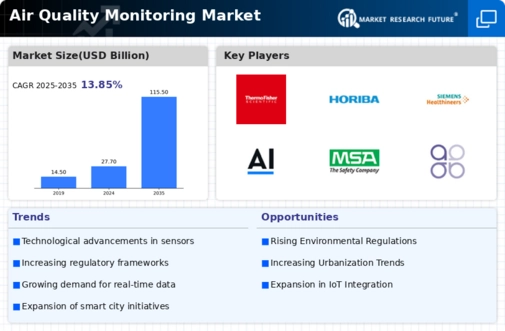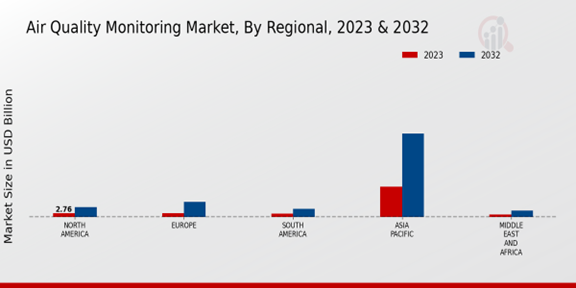Major players in the Air Quality Monitoring Market are continuously investing in research and development to enhance their product offerings, expand their market reach, and gain a competitive edge. The Air Quality Monitoring Market industry is characterized by intense competition, with leading Air Quality Monitoring Market players such as Thermo Fisher Scientific, Horiba, and Siemens Healthineers competing to capture a larger market share. These companies are focusing on developing innovative technologies, expanding their product portfolios, and establishing strategic partnerships to strengthen their position in the market.
The Air Quality Monitoring Market development is being driven by factors such as increasing environmental concerns, government regulations, and technological advancements. The competitive landscape is expected to remain dynamic as new players enter the market and existing players expand their operations globally.
A leading player in the Air Quality Monitoring Market, Thermo Fisher Scientific is headquartered in the United States and is involved in the manufacturing, distribution, and sale of scientific instruments, reagents, and consumables. The company has a strong global presence and a wide range of products and services used in various industrial, academic, and research settings. Thermo Fisher Scientific has a dedicated focus on air quality monitoring and offers a comprehensive portfolio of instruments and solutions, including air quality analyzers, sensors, and data management software.
The company is committed to providing high-quality, reliable, and innovative solutions to meet the needs of customers in various industries, including environmental monitoring, healthcare, and industrial sectors.
Another major competitor in the Air Quality Monitoring Market is Horiba, a Japanese company that specializes in the development, manufacturing, and sale of analytical instruments and systems for various industries, including environmental monitoring, automotive, and life sciences. Horiba has a strong presence in air quality monitoring and offers a wide range of products and services, including air quality analyzers, sensors, and monitoring networks. The company is focused on providing technologically advanced solutions and has a commitment to innovation and research & development.
Horiba's global presence and extensive product portfolio allow it to cater to a wide range of customers, from government agencies and research institutions to industrial and commercial organizations.



















Leave a Comment